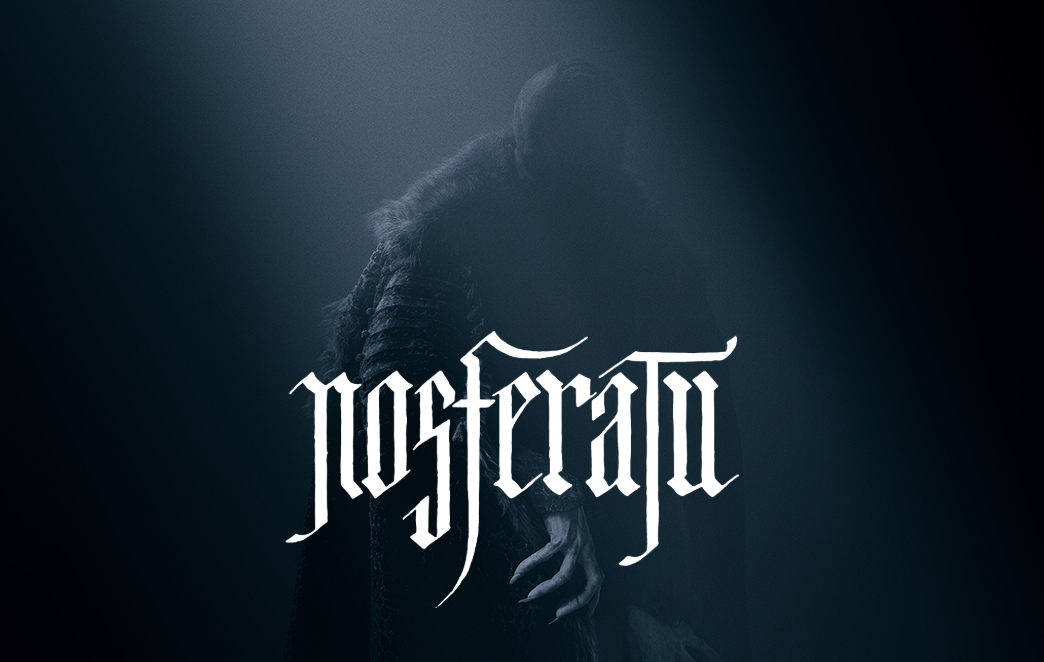'Nosferatu' (2024) Reaction
Robert Eggers' long-awaited take on the century-old classic delivers on aesthetics and dread

F. W. Murnau’s 1922 film adaptation of Bram Stoker’s Dracula novel, entitled Nosferatu: A Symphony of Horror, is one of the most transcendent examples of early cinema — while film schools and horror conventions all over the world celebrate the film and its impact on filmmaking and the horror genre itself, it’s also reached several other demographics over the years thanks to meme culture and, of course, Spongebob Squarepants. The appearance of Count Orlok has been replicated several times, namely in Salem’s Lot (1979) and What We Do in the Shadows (2014), and the film itself has had its fair share of remakes and alternative interpretations, with the two most popular examples being Werner Herzog’s Nosferatu The Vampyre (1979) and Shadow of the Vampire (2000).
I’m almost certain that many of my readers and followers are well aware of my personal affinity for the original Nosferatu — the first writeup I ever did was in celebration of the film’s centennial anniversary in March 2022, and one of my first YouTube videos was about Nosferatu and the original Universal Dracula (1931) (another one of my all-time favorites). I’ve been a fan of the movie and character since I was in elementary school, so when the news of another remake first surfaced in 2015, I instantly became heavily invested and curious to see what the end result would look like.
With how old the first adaptation is, Nosferatu gets some sort of film update every couple decades, and with each generation, it feels like there are only a handful of directors and filmmakers that could faithfully put together a new version of the film that’s faithful to the original while still being able to stand on its own for a new audience. At the top of that list for this particular moment in time is Robert Eggers, who’s known for features like The Witch (2015) and The Lighthouse (2019). His style is one that lends itself perfectly to the type of aesthetic that Nosferatu is known for, and it’s easy to see how much of an influence Nosferatu was for him. As a fan of the original, I was nervous when I first heard the news that there was going to be another remake of it, but that apprehension turned into excited curiosity when I learned that Eggers would be at the helm because I was confident in his ability to being something new to the story without completely straying from what made the original great in the first place. After almost a decade of anticipation, it’s nice to know that the wait was worth it.

Egger’s version of Nosferatu is exactly what a good remake should be — it leans into the visual elements that made the original memorable without outright copying it, and gives itself the space to explore new plot aspects that the original wasn’t able to. First, let’s talk about the casting — Nicholas Hoult does a great job as Thomas Hutter, who’s the Renfield character of the film, which is amusing given his performance as the titular character in Renfield (2023). It’s fun to see him play the same character again, this time in a much more serious context. Another enjoyable inclusion is that of Willem Dafoe, who portrays the Van Helsing-inspired character, Professor Albin Eberhart Von Franz — aside from his well-known acting chops, it’s also comical in a sense to see him in this film, especially in this role, given the fact that he portrayed Max Schreck as Count Orlok in Shadow of the Vampire almost 25 years ago.
Plot-wise, this adaptation fleshes out the character of Ellen Hutter and her connection to Count Orlok much more than previous adaptations have, to the point where Thomas Hutter feels like a secondary character when he was a focal point in prior films. This alternative perspective makes this adaptation stand out from the others in some way, and so do the performances of these characters. Lily-Rose Depp has one of the strongest performances and overall emotional ranges out of the entire cast, with her character showing what it’s like to fall victim to the possessive consequences that come from the vampire’s obsession with them.
Bill Skarsgård is also completely unrecognizable as Count Orlok — it’s impossible to see his actual self underneath the makeup, and his voice work is unbelievable. Not only did he go to great lengths in terms of preparation to train his voice for this role, but post-production went a long way as well, allowing him to speak closely into the microphone and add an extra weight to his voice that would’ve been missing with just the audio from the boom mic on set.
It would’ve been very easy to completely replicate the look of Murnau’s version of Count Orlok, but I commend this film for taking the risk of doing their own thing with the character. It’s a much more accurate depiction of what vampires were believed to look like in central European folklore, and there are still certain attributes that call back to the original enough to not feel like a complete disregard for what came before it.
What’s also great is how the appearance of Orlok has been kept hidden throughout the entire promotional campaign in advance of the film’s release — vampires already have a sense of mystique about them, and having some form of aesthetic anonymity only elevates that feeling. It’s also a fantastic marketing tactic because it doesn’t give the viewer a chance to make a snap judgement decision to not see the film simply because of how the vampire looks.

It’s already been said many times before, but the aesthetic incredibility of this movie can’t be overstated — Nosferatu is a straight-up visual masterpiece. From the set design to the cinematography, there’s an immersive atmosphere that makes the viewer feel like they’re in 19th century Europe. Much like what made the original 1922 version the work of art that it is, this adaptation capitalizes on the darkness and general use of shadows. Orlok is hidden in darkness for a decent amount of his time on screen, and the silhouette work throughout the film is amazing. In terms of framing and composition, every exterior shot looks like it could be a painting and hung up in someone’s house. A common complaint with modern movies tends to be that they’re too dark and sometimes difficult to see everything that’s going on, but that was never a problem with Nosferatu. There are several dark moments in this film, obviously, but there still wasn’t a single occurrence in which it was hard to see important things on screen.
Out of all the different versions of this film, this is easily the longest one, clocking in at two hours and twelve minutes. That being said, as someone who has a history of saying that movies are better under the two hour mark, I personally wasn’t annoyed with the pacing of this one. There were a couple moments in which it felt like a slow burn, and I can understand how some people might have felt a little listless at those points, but it wasn’t a glaring issue in my eyes.
All in all, Robert Eggers’ version of Nosferatu was a film I’ve waited almost ten whole years for, and I can confirm that the end result was worth the anticipation. As a lifelong fan of the original film, I had extremely high hopes and was wildly curious about what the approach would be with this update, and I found myself both surprised and impressed with what was brought to the table. It feels like all the right people were involved in the making of the movie, from the cast to the behind-the-scenes crew, and it’s honestly just awesome to see a property like Nosferatu on the big screen again in such a momentous way.

Nosferatu was released theatrically on Christmas and is still playing in theaters for the time being, with screentimes and other information available here.
Thanks for reading! If you liked this article and want to keep up with more from me, feel free to subscribe

